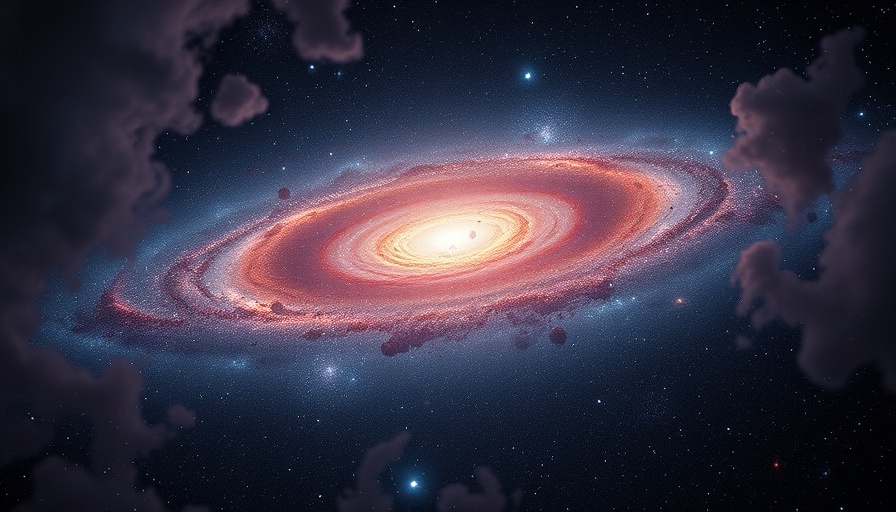
Introducing the Sculptor Galaxy: A Closer Look at Cosmic Beauty
NASA's latest image of the Sculptor galaxy, NGC 253, highlights the intricate beauty of this nearby spiral galaxy, located 11 million light-years away in the constellation Sculptor. The image, created with ESO's Very Large Telescope (VLT) in Chile, showcases a stunning array of colors spanning 65,000 light-years—a length almost matching the full width of the galaxy itself. With an impressive collection of over 100 exposures captured over 50 hours, this new photo not only dazzles visually but also promises to advance our understanding of galactic structure and dynamics.
Understanding Spiral Galaxies and Their Secrets
The Sculptor galaxy is classified as a starburst galaxy, meaning it is busily creating new stars at a remarkable rate. Starburst galaxies like Sculptor present a unique opportunity for astronomers: they allow scientists to examine stellar formation processes in detail. The numerous colors in the image are not merely aesthetic; they provide scientists with vital information about the age, composition, and motion of stars, gas, and dust within the galaxy.
The Role of Color in Astrophysics
In traditional astronomical images, color palettes tend to be limited, often obscuring the rich detail that color can convey about celestial phenomena. The latest imaging techniques utilized in the Sculptor galaxy photo revealed thousands of hues—from deep purples to soft yellows—enhancing the data gathered from this cosmic region. Each color corresponds to different elements and temperatures of the stars, ultimately conveying a narrative of the galaxy's ongoing evolution.
New Discoveries in Galactic Mapping
The data gleaned from the observations of the Sculptor galaxy has already proven fruitful, leading to the discovery of over 500 planetary nebulae—clouds of gas and dust formed from dying stars. Each nebula serves as a cosmic mile marker, helping astronomers plot the lifecycle of stars within the galaxy. This not only enriches our understanding of the Sculptor galaxy itself but also contributes to a broader comprehension of the universe's star formation processes.
The Future of Galactic Studies
As astronomers continue to analyze the rich data from the Sculptor galaxy, future predictions about other starburst galaxies are likely to emerge. Understanding the conditions that lead to the formation of such galaxies can inform our theories about the universe's history and its eventual fate. In a rapidly evolving technological landscape, continued advancements in telescope technology and imaging techniques will only enhance our ability to peer deeper into the cosmos.
Ultimately, the captivating images released by the ESO are more than just beautiful pictures; they are windows into the mysteries of the universe, driving innovations in both astrophysics and the technologies used to explore our celestial neighborhood. This vast array of cosmic phenomena not only inspires awe but invites everyone—amateur stargazers and seasoned astronomers alike—to engage in the exploration of space.
 Add Row
Add Row  Add
Add 




Write A Comment